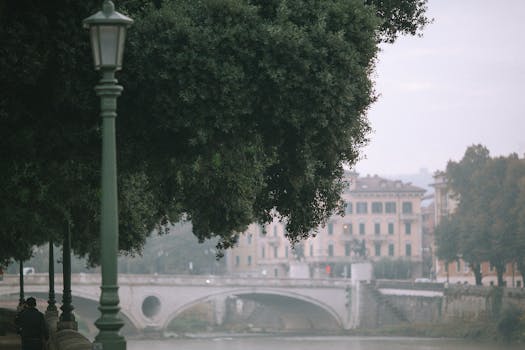
Urban Green Spaces: The Future of Outdoor Living in European Cities by 2025
Urban Green Spaces are becoming increasingly important in European cities, as they provide a sustainable and healthy environment for citizens to live, work, and relax. With the rising awareness of climate change, urban green spaces have become a vital component of urban planning, aiming to reduce the urban heat island effect, improve air quality, and promote biodiversity. In this article, we will explore the future of outdoor living in European cities, focusing on the role of urban green spaces in creating sustainable and livable cities by 2025.
Introduction to Urban Green Spaces
Urban green spaces refer to areas of vegetation, such as parks, gardens, and green roofs, that are integrated into urban environments. These spaces provide numerous benefits, including reducing urban pollution, mitigating the urban heat island effect, and promoting mental health and well-being. As European cities continue to grow and urbanize, the importance of urban green spaces will only continue to increase.
The Benefits of Urban Green Spaces
Urban green spaces offer a wide range of benefits, from environmental and social to economic and health-related advantages. Some of the key benefits of urban green spaces include:
- Improved air quality: Urban green spaces help to remove pollutants from the air, improving the overall air quality and contributing to a healthier environment.
- Reduced urban heat island effect: Green spaces can reduce the temperature in urban areas, mitigating the urban heat island effect and creating a more comfortable living environment.
- Promoted mental health and well-being: Spending time in nature has been shown to have a positive impact on mental health, reducing stress and anxiety and improving overall well-being.
- Increased biodiversity: Urban green spaces provide habitats for a wide range of plant and animal species, promoting biodiversity and supporting local ecosystems.
European Cities Leading the Way in Urban Green Spaces
Several European cities are leading the way in incorporating urban green spaces into their urban planning strategies. Some examples include:
- Copenhagen, Denmark: Copenhagen has implemented a comprehensive green infrastructure plan, aiming to become carbon neutral by 2025. The city has invested heavily in green roofs, parks, and green spaces, creating a sustainable and livable environment for its citizens.
- Stockholm, Sweden: Stockholm has implemented a range of green infrastructure initiatives, including green roofs, green walls, and urban parks. The city has also introduced a range of innovative solutions, such as floating gardens and green spaces on rooftops.
- Barcelona, Spain: Barcelona has implemented a range of urban green space initiatives, including the creation of green roofs, green walls, and urban parks. The city has also introduced a range of innovative solutions, such as green spaces on rooftops and in abandoned buildings.
Conclusion
Urban green spaces are becoming increasingly important in European cities, providing a sustainable and healthy environment for citizens to live, work, and relax. As we look to the future, it is clear that urban green spaces will play a vital role in creating sustainable and livable cities. By incorporating green infrastructure into urban planning strategies, cities can reduce the urban heat island effect, improve air quality, and promote biodiversity. As we approach 2025, it is essential that cities prioritize the development of urban green spaces, ensuring a healthy, sustainable, and livable environment for future generations.






